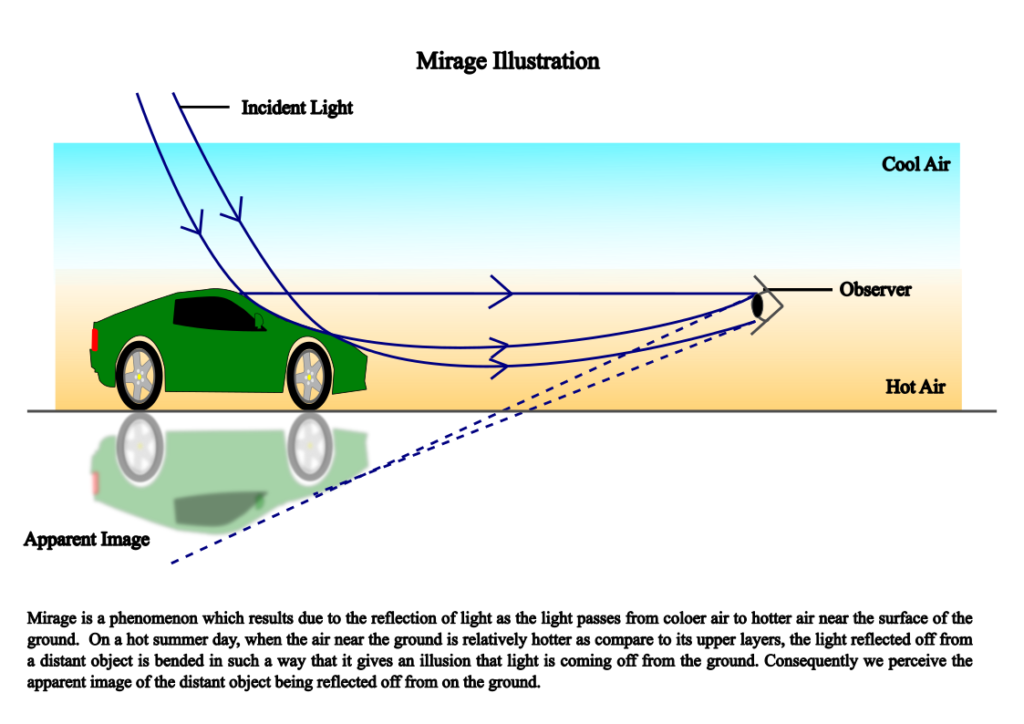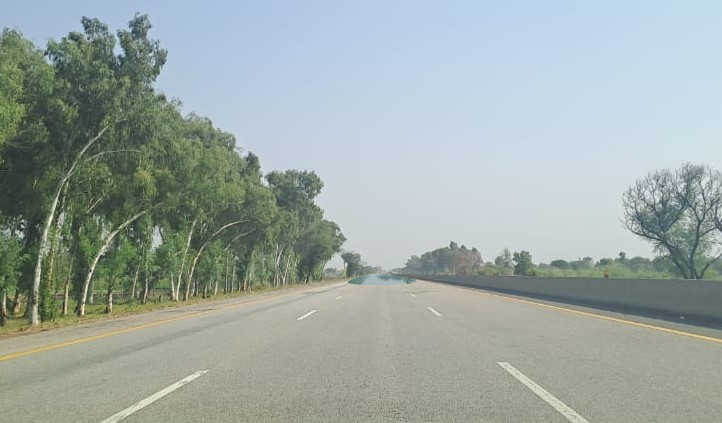What is a mirage?
A mirage is a naturally occurring optical illusion that occurs when light bends due to temperature differences in the air and result in making objects appear to be in different location than they are.
Sometimes, it also creates a view of a pool of water or a distorted reflection on the ground or horizon. The common places to witness a mirage are deserts, over hot roads, or flat areas on sunny days.
Let’s shed some light on the topic and try to comprehend how it works.
How does the mirage occur?
A mirage occurs due to the refraction of light rays. When light enters from relatively colder air to hotter air, it causes an optical illusion due to varying temperature between colder and hotter air. Due to the bending of light, it creates an apparent image of a distant object onto the ground surface.

Moreover, when light bends upward toward the human’s eyes, it creates an illusion or the brain interprets it as if the light came straight from the ground. We all have seen the illusion of water on the road or a shiny surface.
Type of Mirages
There are two types of mirages
1. Inferior mirage
It’s a type of mirage that occurs when light seems to be bending upwards, which creates an apparent image of distant object that appears below the object.
For instance, an empty road looks wet on a hot day; this view occurs when the ground is very hot and the air above is cooler.
2. Superior mirage
The superior mirage occurs when an apparent image of the object appears above its actual position. This type of situation occurs in colder regions where warm air lies above a cooler layer.
You must have seen pictures or videos of ships appearing to float above sea level as it can make distant objects appear distorted or in a different place than they actually are.

